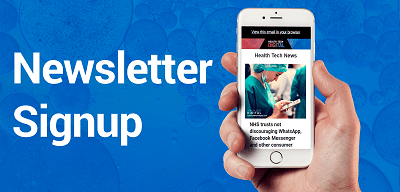
NHS England’s most recent ten-year plan shows no shortage of ambition or investment. Billions are being directed towards digital tools, data integration, and smarter patient care. This is to enable the desired shifts: moving more care from hospitals to the community; using technology to free staff from administrative tasks and help people manage their own care as easily as they bank or shop online; and shifting from treating sickness to preventing it – reaching patients earlier and supporting them to make the healthy choice the easy choice.
While digital transformation offers significant potential, its success depends in part on reliable mobile connectivity within hospital buildings – something that cannot be taken for granted in the NHS estate. Thick walls and complex building layouts mean hospitals often suffer from poor indoor mobile signal. 4G/5G signal cannot penetrate from outdoors, meaning a dedicated indoor multi-operator system is needed to bring signal in from the
network operators (EE, Virgin Media O2, Vodafone and Three).
According to research carried out with C-suite and IT directors working in the NHS and healthcare organisations such as private hospitals, poor indoor mobile coverage is costing the UK healthcare sector an estimated £3.79 billion a year. It highlights the real-world consequences for patient care of disrupted communication, delays in accessing patient records, and inefficient workflows. When calls drop mid-conversation, when a data session drops mid-record update, or when clinical staff can’t rely on mobile devices to update or receive alerts in real time, it isn’t just frustrating – it’s costly and life-threatening.
The good news is that most of what the NHS is losing is recoverable, with better indoor connectivity empowering clinicians and non-clinicians alike to work more efficiently and deliver better patient care. The cost to the NHS is made up of the minutes wasted when staff can’t reach each other, the admin hours spent tracking down missing progress checks, and the delays caused when records can’t be accessed on the move, meaning clinicians spend time searching for a spot inside which allows them to upload or download patient records. With strong multi-operator indoor mobile connectivity, patient records can be updated at the bedside, and outdated analogue systems such as pagers can be replaced with real-time specialist healthcare workforce tools such as Alertive, allowing instant and reliable communication between teams. This all adds up to more time being spent with patients, rather than on admin.
Mobile connectivity is now a foundational element of NHS infrastructure. Hospital Wi-Fi is often overburdened, and when it fails mobile coverage needs to be available as a resilient backbone. Without it, business continuity at hospitals is put at risk. Everything from digital consultations and prescription tracking to clinical alerts and record-keeping depends on real- time, uninterrupted connectivity. We’ve seen the consequences when that infrastructure isn’t in place: entire systems going down, staff reverting to pen and paper, and communication between teams grinding to a halt or issues being missed, directly impacting patient care. In short, when connectivity fails, the ability to deliver care falters, and backlogs increase.
As a result of these technological challenges, it’s not just the staff who suffer. For patients and their families, poor mobile signal adds friction at every stage of the healthcare journey. Someone waiting for a test result might be unable to access it via the NHS App. A loved one trying to reach a patient on the ward or in an A&E waiting room can’t get through. Nurses, forced to play messenger, walk the corridors in search of signal just to update records or communicate with colleagues. These small moments of disconnection add up to delays, frustration, and a hospital experience that feels anything but modern. NHS research shows that feelings of isolation or social disconnection are more than a frustration, it can impair recovery in hospital and post-hospital settings.
This matters more than ever as the NHS leans into mobile-first services. The 10 Year Health Plan for England calls for integrated digital records, remote monitoring, app-based bookings, and patient-led care journeys. It positions the NHS App to become the central gateway into NHS services by 2028, essentially a ”doctor in your pocket” that empowers patients with choice and control. And with more than 34 million registered users already, and more and more in-house and third-party apps being developed and adopted, there’s a clear appetite
for this technology from patients.
But none of that works without strong, reliable mobile signal throughout the estate. Digital front doors don’t open if you can’t connect to them. Fortunately, hospitals don’t need to wait for new builds or overhaul entire estates to solve this and some NHS trusts are already tackling the mobile connectivity issue. Solutions which provide assured mobile coverage room by room can extend mobile networks across sites with multiple buildings. These technologies help not just clinical staff, but also patients, visitors, porters and estates teams – anyone who relies on staying connected to keep care moving.
The looming shutdown of the Public Switched Telephone Network (PSTN) marks a major turning point for NHS infrastructure, completing the full transition to digital communication systems away from traditional copper wires. With the full shutdown of the PSTN scheduled for January 2027, and the NHS App on track to become a universal digital front door by 2028, the urgency around mobile connectivity is growing. Hospitals can’t afford to lag on the very infrastructure that underpins these services. Mobile connectivity is the bridge between the NHS’s digital ambitions and the reality on the ground. It reduces the strain on Wi-Fi networks, is the enabler of real-time care, and the thread that ties together every step of a
patient’s digital journey.
If we want to deliver a truly digital NHS, we must start with the foundations – because without strong mobile coverage, the future we’re all working towards will remain just out of reach.











